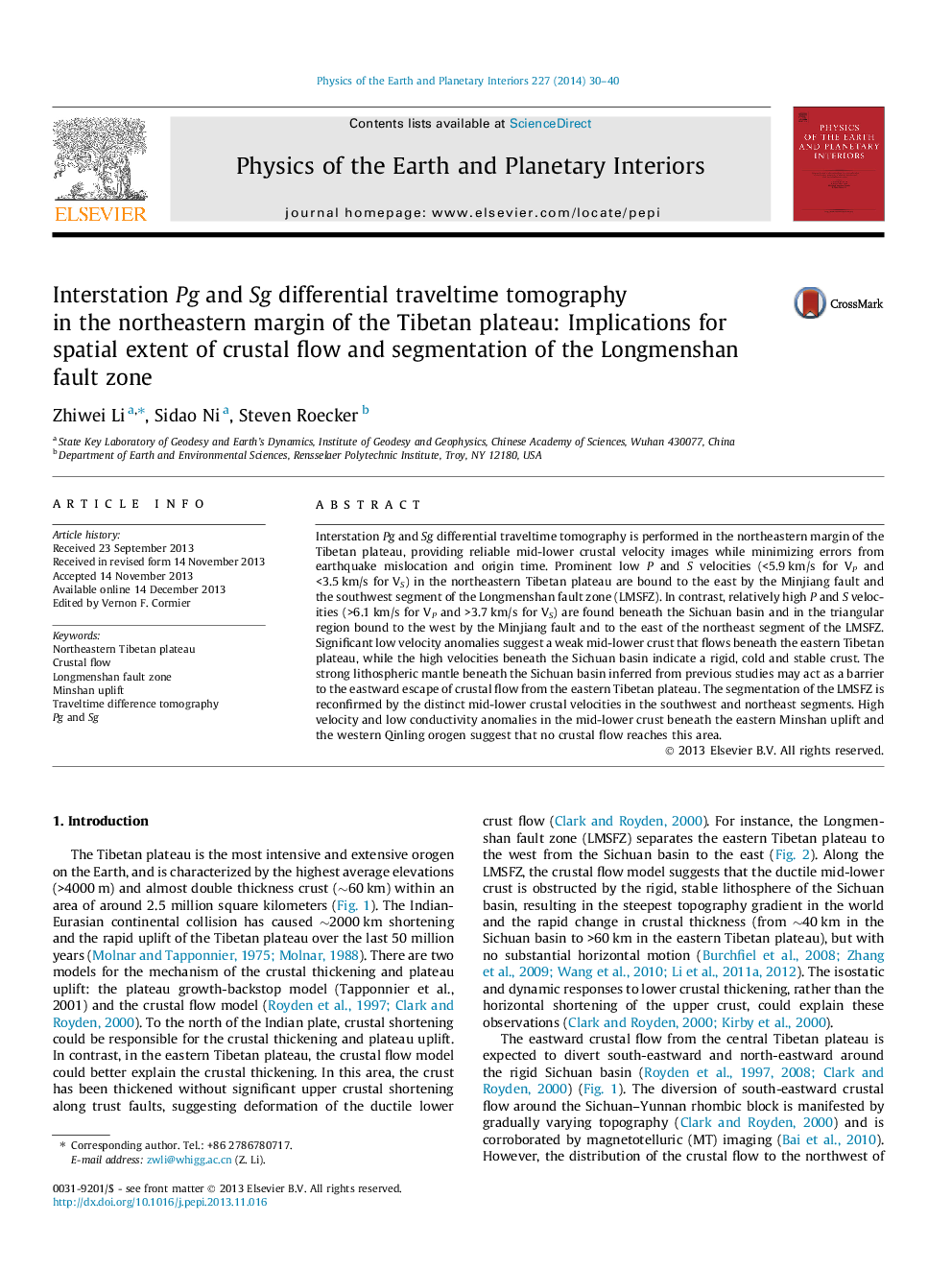| Article ID | Journal | Published Year | Pages | File Type |
|---|---|---|---|---|
| 4741472 | Physics of the Earth and Planetary Interiors | 2014 | 11 Pages |
•Low crustal P and S velocities beneath northeastern Tibet suggest crustal flow.•No crustal flow reaches the eastern Minshan uplift and the western Qinling orogen.•Segmentation of LMSFZ is confirmed by distinct mid-lower crustal velocities.•The tomographic method minimizes the errors of earthquake location and origin time.
Interstation Pg and Sg differential traveltime tomography is performed in the northeastern margin of the Tibetan plateau, providing reliable mid-lower crustal velocity images while minimizing errors from earthquake mislocation and origin time. Prominent low P and S velocities (<5.9 km/s for VP and <3.5 km/s for VS) in the northeastern Tibetan plateau are bound to the east by the Minjiang fault and the southwest segment of the Longmenshan fault zone (LMSFZ). In contrast, relatively high P and S velocities (>6.1 km/s for VP and >3.7 km/s for VS) are found beneath the Sichuan basin and in the triangular region bound to the west by the Minjiang fault and to the east of the northeast segment of the LMSFZ. Significant low velocity anomalies suggest a weak mid-lower crust that flows beneath the eastern Tibetan plateau, while the high velocities beneath the Sichuan basin indicate a rigid, cold and stable crust. The strong lithospheric mantle beneath the Sichuan basin inferred from previous studies may act as a barrier to the eastward escape of crustal flow from the eastern Tibetan plateau. The segmentation of the LMSFZ is reconfirmed by the distinct mid-lower crustal velocities in the southwest and northeast segments. High velocity and low conductivity anomalies in the mid-lower crust beneath the eastern Minshan uplift and the western Qinling orogen suggest that no crustal flow reaches this area.
